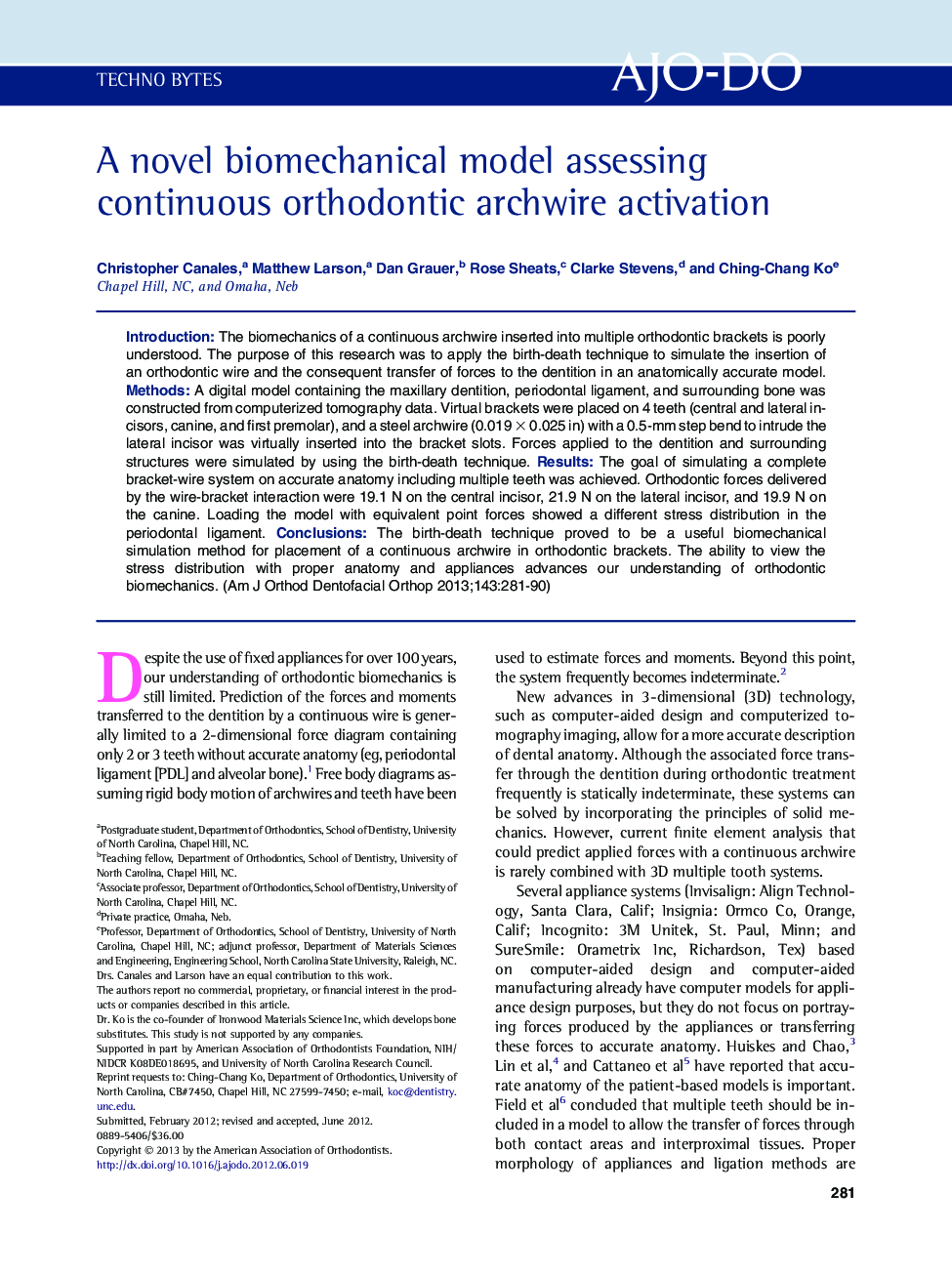| Article ID | Journal | Published Year | Pages | File Type |
|---|---|---|---|---|
| 3116952 | American Journal of Orthodontics and Dentofacial Orthopedics | 2013 | 10 Pages |
IntroductionThe biomechanics of a continuous archwire inserted into multiple orthodontic brackets is poorly understood. The purpose of this research was to apply the birth-death technique to simulate the insertion of an orthodontic wire and the consequent transfer of forces to the dentition in an anatomically accurate model.MethodsA digital model containing the maxillary dentition, periodontal ligament, and surrounding bone was constructed from computerized tomography data. Virtual brackets were placed on 4 teeth (central and lateral incisors, canine, and first premolar), and a steel archwire (0.019 × 0.025 in) with a 0.5-mm step bend to intrude the lateral incisor was virtually inserted into the bracket slots. Forces applied to the dentition and surrounding structures were simulated by using the birth-death technique.ResultsThe goal of simulating a complete bracket-wire system on accurate anatomy including multiple teeth was achieved. Orthodontic forces delivered by the wire-bracket interaction were 19.1 N on the central incisor, 21.9 N on the lateral incisor, and 19.9 N on the canine. Loading the model with equivalent point forces showed a different stress distribution in the periodontal ligament.ConclusionsThe birth-death technique proved to be a useful biomechanical simulation method for placement of a continuous archwire in orthodontic brackets. The ability to view the stress distribution with proper anatomy and appliances advances our understanding of orthodontic biomechanics.
